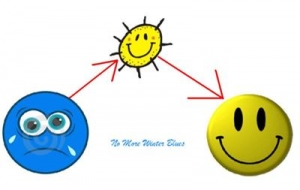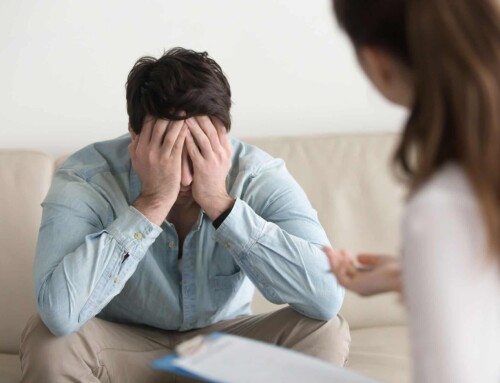Orlando Counselor gives tips if you are struggling with Winter blues. 3 Tips to Stay Happy During the Winter by Jada Jackson, LMHC
 Here in Florida we are lucky that we don’t have to put up with snow or much cold weather at all, but you still may find yourself with a case of the winter blues. This is especially true for those who live in parts of the nation with very long and harsh winters. Feeling down and not as energetic during the winter season is a real phenomenon and a more popular occurrence than one may think. I have even experienced this slight decline in mental health or acuity during the months of December and January—don’t feel that you are alone in this situation! In fact, studies show that rates of depression do increase during the winter season. The clinical diagnosis for feeling mentally healthy throughout the rest of the year, but exhibiting depressive symptoms in the winter—or the summer in some cases—is seasonal affective disorder. It is course specific and is typically diagnosed with major depressive disorder or bipolar disorder.
Here in Florida we are lucky that we don’t have to put up with snow or much cold weather at all, but you still may find yourself with a case of the winter blues. This is especially true for those who live in parts of the nation with very long and harsh winters. Feeling down and not as energetic during the winter season is a real phenomenon and a more popular occurrence than one may think. I have even experienced this slight decline in mental health or acuity during the months of December and January—don’t feel that you are alone in this situation! In fact, studies show that rates of depression do increase during the winter season. The clinical diagnosis for feeling mentally healthy throughout the rest of the year, but exhibiting depressive symptoms in the winter—or the summer in some cases—is seasonal affective disorder. It is course specific and is typically diagnosed with major depressive disorder or bipolar disorder.
This is a unique mood disorder classified as such in the Diagnostic and Statistical Manual of Mental Disorders-V. Not surprisingly, prevalence ranges from low in states warm most of the year, to high in states with a consistently cold climate. 1.4% of the population in Florida possesses this type of depression and almost 10% of Alaskans exhibit the winter blues. Symptoms of this condition include having little energy, low motivation to go anywhere or do anything, staying at home a lot more than usual, tendency to overeat and oversleep, withdrawal from friends, and a general sense of depression. Seasonal mood changes are considered to be related to light. Evidence supporting that theory includes the success of bright light therapy for those afflicted. The therapy improves the delay in a patient’s circadian rhythm. The correction results in notable improvement.
As I stated before, Floridians do not experience much of a winter. So fortunately, exhibiting winter blues symptoms is not as common, nor are people at as much of a risk for developing SAD as those in places like Finland and Alaska. It is almost springtime as well, but for future reference and for individuals who deal with a long cold season, there are a few easy ways to treat the common condition!
- Expose yourself to more sunlight!
Spend more time outside; consciously make the decision to do so. Just getting out of the house will improve your mood, and the effects of light have proven to be especially worthwhile. For those who live in places with little sunlight, light therapy with a lamp has been effective as well.
- Take the initiative to get more exercise.
Staying active will help reduce feeling a lack of energy, and it has been shown to increase motivation and improve sleep patterns.
- For those who have been diagnosed with SAD in addition to major depressive disorder, adhering to prescribed medication and taking a carefully timed supplement of melatonin will help dramatically.
In addition, Vitamin D supplements are an alternative choice of treatment—more accessible by being available over the counter.
Everyone goes through phases of feeling down. The good news is that for the specific condition of mood change/decline with the seasons, there are many ways to remedy the problem. You don’t have to suffer throughout winter and let the blues beat you!
NOTE: Freely redistribute this resource, electronically or in print, provided you leave the authors, name, credentials, and contact information below intact and include a link to this article.
AUTHOR: Jada Jackson, MS, LMHC – Communicator, Coach & Licensed Mental Health Counselor working with couples, teens, young adults and women empowerment issues in Orlando and East Orlando Florida! Jada Jackson can be reached at (407) 248-0030.
Author: Emily Simpson (Intern: University of Central Florida)






Leave A Comment